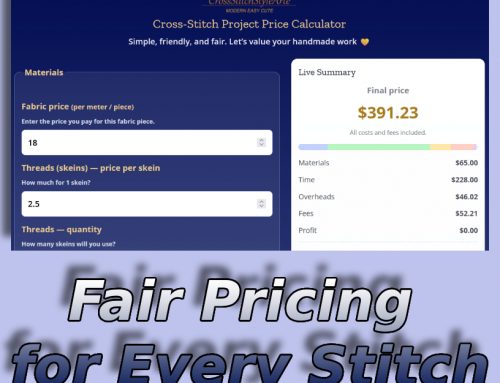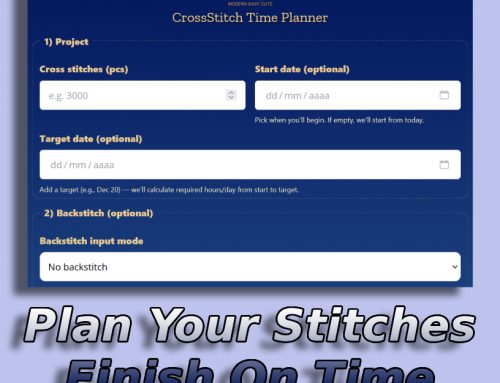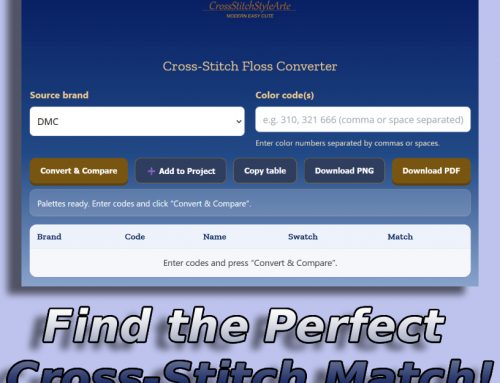Overview of Different Cross-Stitch Techniques
Cross-stitch embroidery is not just a captivating hobby but a form of art with numerous techniques and approaches. This article is intended for beginners who want to explore different techniques and choose the one that best suits their project. Let’s dive into the main methods used in cross-stitch embroidery.
1. Basic Cross Stitch
The Basic Cross Stitch is the most common technique, forming the foundation of any cross-stitch project. It consists of two diagonal stitches that intersect, creating an “X” on the fabric. This method is an excellent starting point for beginners as it is simple and easy to understand.
– Tools: Thread, needle, embroidery hoop, fabric (usually Aida cloth).
– Process: The stitch is made by bringing the needle up from the bottom left, down to the top right, then up from the bottom right, and finally down to the top left.
2. Three-Quarter Stitch
The Three-Quarter Stitch is used to create fine details and curved lines. It consists of one full diagonal stitch and one half-stitch, forming three-quarters of a cross. This technique adds extra depth and precision to the design.
– Tools: Same as for Basic Cross Stitch.
– Process: Start with a half stitch, then overlay it with a full diagonal stitch.
3. Half Cross Stitch
Half Cross Stitch* involves making only the first diagonal stitch of the cross. This method is ideal for background elements or creating texture. It is also used to create shadows or to save thread.
– Tools: Standard cross-stitch tools.
– Process: Only the first diagonal stitch is made, instead of completing the full cross.
4. Backstitch
Backstitch is used for outlining and adding definition to the design. It is a basic technique for creating thin lines and detailing, making the image more expressive and complete.
– Tools: Thread, needle, fabric.
– Process: The thread is stitched back along the line of the previous stitch, creating a continuous outline.
5. French Knot
The French Knot is a decorative knot that adds texture and dimension to the embroidery. It is used to create dots, eyes, flower centers, and other small details.
– Tools: Thread, needle, fabric.
– Process: The thread is wrapped around the needle a few times before inserting it back into the fabric close to where it emerged.
6. Blending
Blending involves mixing two or more thread colors in one needle to create smooth color transitions or a glowing effect. This method is used for creating gradients or adding complex shading.
– Tools: Threads of different colors, needle, fabric.
– Process: Two threads of different colors are inserted into one needle and used for stitching.
7. Blended Cross Stitch
Blended Cross Stitch combines various cross-stitch techniques to create complex and layered designs. This technique involves using full and half stitches, along with French knots and backstitching, to achieve maximum detail.
– Tools: A variety of threads, needle, fabric.
– Process: Combining different techniques in one area of the embroidery to create a more intricate design.
Conclusion
Mastering these cross-stitch techniques will allow you to create diverse and unique designs, develop your skills, and reach new levels of craftsmanship. Whether you are just beginning your journey into the world of cross-stitch or are already an experienced stitcher, each of these techniques can be used to add a special charm to your projects.
Here you can find other cross-stitch tutorials and masterclasses for beginners and beyond.
























Leave A Comment